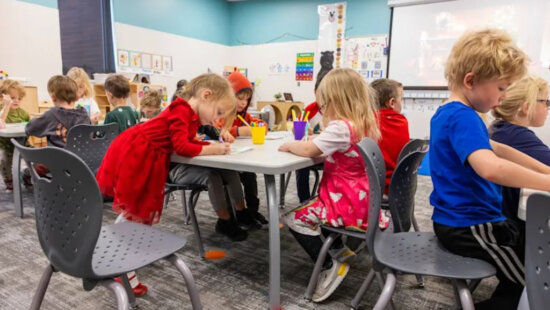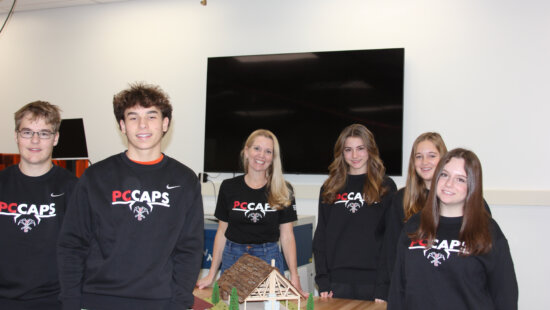News
Biannual Student SHARP Survey Assesses Risk, Funds Programs

About 55,000 Utah students take the SHARP survey each time it is administered. Photo: Ben Mullins for Unsplash
Some Park City School District parents recently received ‘consent letters’ allowing them to opt in to a state survey that assesses risky behavior among youth. While the SHARP survey is familiar to some families, others have expressed concern about the survey’s content and purpose.
The SHARP survey is a Utah-specific questionnaire that has been administered to students in grades 6, 8, 10, and 12 every other year since 2003. Anonymous survey data identifies needs and helps develop programs targeted to specific communities. SHARP survey data makes Utah eligible for tens of millions of dollars it receives in annual federal grant money.
The survey comes from the Utah Division of Substances and Mental Health Services, and was developed in coordination with the Utah Department of Education. Individual school districts have no involvement with it other than managing opt-in forms and administering the survey to students.
Craig PoVey, prevention program administrator at the Utah Division of Substances and Mental Health Services, has worked on the SHARP survey since it began, and said part of his job has long been to counter misinformation about it.
“There’s absolutely no research that shows these surveys increase use (of substances),” he said in reference to a common concern. “There is research that shows that communities that use these surveys decrease use.”
SHARP surveys are administered in many other states; each state’s survey is unique and based on data relevant to its demographics. One example of how survey questions vary by state: In places with large urban areas, students answer questions about guns in schools. Survey scientists found that question was less relevant in Utah because many students in ranching communities brought guns to school, which did not pose the same type of risk that they did in urban areas. So Utah’s gun questions evolved to address safe gun storage within homes.
“It’s like going into a doctor; the doctor does an assessment. He doesn’t just throw a bunch of stuff at you,” PoVey said. “That’s what we’re doing within communities, finding out which factors and which substances are in play. Then we can use evidence-based information to implement best practices. Otherwise we’re just shooting from the hip.”
PoVey said he has encountered situations in which concerned parents have googled the survey and found questions from other states, and mistakenly believed those questions applied to their own area. He acknowledged, however, that questions are frank, and can be surprising, but that decades of ongoing research into what students at various grade levels hear and are exposed to contribute to formulating the survey.
Another misperception PoVey encounters in affluent areas is that socioeconomically advantaged students are at less risk of substance abuse. He said data shows the opposite is true.
“Addiction is an equal opportunity destroyer,” he said. “And more money means more access (to drugs and alcohol) than people with less money have.”
He added that while Utah as a whole typically reports youth alcohol, tobacco and marijuana use statistics that are about half of the national average, Summit County statistics mirror national averages.
“We’ve got major issues that need to be dealt with,” he said of Summit County. “If you’re not sure whether your kids have heard about these things, have a conversation with them. If your 6th grader doesn’t know what LSD is they probably should, before they go into junior high, because they’re hearing about it.”
Mary Christa Smith, executive director of Communities That Care (CTC), a prevention coalition with a mission to “foster a culture of health for youth and families,” said that the Summit County Health Department, the Park City Education Foundation, the Park City Community Foundation and many other youth programs use SHARP survey data to write grants.
“The reason that CTC was even eligible for the $125,000 annual Drug-free Communities grant is because we had access to this data,” she said, adding that as the parent of a sixth-grader, the survey is also useful on a personal level.
“It helps me to drill down on what’s really happening with the kids,” she said. “For example when I see that vaping rates double from 6th to 8th grade, and double again from 8th to 10th grade it rings my mom alarm bell and motivates me to provide the education to make healthy choices.”
The amount of money that SHARP survey data drives to substance abuse programs throughout Utah each year may be incalculable. Two federal grants provide $19 million annually, but counties and community organizations also use SHARP data for countless other grants. For example, five southern Utah counties have applied for ‘Drug-free Community’ grants – a Centers for Disease Control-administered program that requires SHARP data in the application process. Some communities also receive recreation-related grants using SHARP data.
PoVey said his office works closely with law enforcement to stay current on ‘street names’ for drugs so that the survey uses the same terms that children will hear in school and other social settings. He urged parents not to shy away from frank discussion about drugs and alcohol. Parental instincts might naturally incline toward sheltering children, but curiosity and the abundance of information – and misinformation – from peers means parents will likely see better results if they don’t avoid these subjects, he said.
“You gotta say, ‘you might hear about Pink…and the healthier thing is for you not to put anything in your body if we haven’t had a discussion about it,’” he said in an example of a parent-child conversation topic. “Talk about it, set guidelines. The science exists about raising kids to handle their curiosity safely with skills and tools.”
Surveys for each grade level can be found here.
Click here to view the 2019 SHARP results for Summit County, which are the most recent available: https://dsamh.utah.gov/pdf/sharp/2019/Summit%20County.pdf.




















